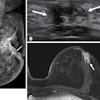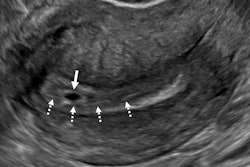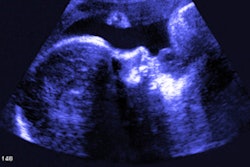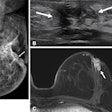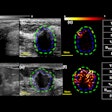A "safety bundle" approach for operative vaginal birth that includes intrapartum ultrasound may improve outcomes, according to research published July 8 in the American Journal of Obstetrics & Gynecology.
This strategy reduced the rates of unsuccessful operative vaginal births and may reduce rates of neonatal birth trauma and neonatal intensive care admissions, wrote a team led by Sasha Skinner, MBBS, from Monash Health in Victoria, Australia.
"Such an approach may also lead to fewer cases of neonates delivered in an unexpected position, severe neonatal birth trauma, and NICU admissions," the Skinner team highlighted.
Poor outcomes from operative vaginal birth are linked to various causes. These include failure to recognize malposition, a breakdown in interdisciplinary communication, and deviation from accepted guidelines.
Previous studies suggest that intrapartum ultrasound improves the diagnosis of fetal head position in labor. Safety checklists are used in medical specialties with improved adherence to guidelines and safety culture.
Skinner and colleagues implemented a safety bundle approach, which consists of the following steps: routine intrapartum ultrasound exams, a structured time-out and procedural checklist, a birth experience survey, and a postnatal debrief pathway.
The team compared clinical outcomes from operative vaginal birth before and after implementing the safety bundle at Monash Health. It prospectively collected postimplementation data from 2022 to 2024 and compared that data with preimplementation control data collected between 2019 and 2021. Final analysis included 2,427 births in the post-safety bundle group and 2,914 births from the control group.
The researchers reported that ultrasound was performed significantly more in the safety bundle compared with the control group (55.8% vs. 5%, p < 0.001). This is "likely" due to ongoing workshops increasing competence among ultrasound users and "cultural change at our institution to use ultrasound more routinely," they wrote.
The team also found that with the safety bundle, mothers were slightly older and had a slightly later gestational age, specialist obstetricians attended births more, and vaginal stations were more commonly low. It also reported less occiput anterior positioning at birth and less missing documentation of clinical assessment.
The team reported no significant differences in rates of forceps, vacuum, or fully dilated cesarean births overall. However, it also highlighted success with the safety bundle in reducing NICU admission rates and more cesarean births without attempted operational vaginal births, among other findings.
Comparison of outcomes pre-, post-safety bundle implementation | |||
Outcome | Pre-safety bundle | Post-safety bundle | p-value |
Cesarean births without attempted operational vaginal births | 7.8% | 9.5% | 0.03 |
Births with ≥ 4 tractions or ≥ 2 cup detachments | 8.5% | 5.8% | < 0.001 |
Unsuccessful operational vaginal births | 8.3% | 6.3% | 0.005 |
Predefined neonatal composite morbidity | 13.9% | 14.2% | 0.8 |
Neonates delivered in unexpected position | 2.8% | 0.7% | < 0.001 |
Severe neonatal birth trauma | 2.5% | 1.3% | < 0.001 |
NICU admissions | 2.7% | 1.8% | 0.02 |
The rates of postpartum hemorrhage > 1000 mL increased with the safety bundle (17.6% vs. 15.2%, p = 0.02). However, the team reported no significant differences in blood transfusions (3.7% vs. 3.8%, p = 0.96) or obstetrical anal sphincter injury (4.8% vs. 5.4%, p = 0.38).
Finally, interrupted time-series analysis showed significant step reductions in fully dilated cesarean (-5.9%, p = 0.05), unsuccessful operative vaginal birth attempts (-5.1%, p = 0.008), and cesarean for unsuccessful operative vaginal births (-2.4%, p = 0.03). The team also reported no significant difference in neonatal or maternal morbidity in this analysis.
The study authors highlighted that the ultrasound finding "may better reflect the impact of introducing routine intrapartum ultrasound in other settings."
"Furthermore, development of similar care bundles may apply to other aspects of labor care, especially for emergency procedures requiring multidisciplinary input," they added.
The full study can be read here.


